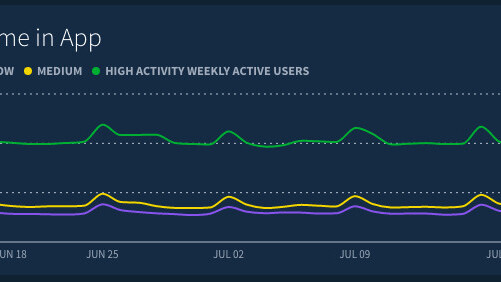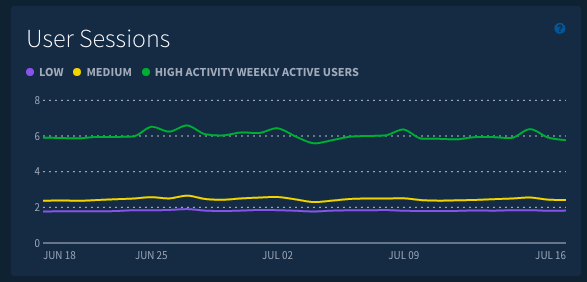
To help developers make sense of users, Twitter’s Fabric suite of tools is introducing ‘Activity Segments’ for Answers.
Specifically, Activity Segments gives developers insight on user activity. It hopes to help developers understand how much we’re not using an app, so an action can be taken to avoid churn.
Retention is important for any developer, and user behavior is often a precursor. By catching patterns early on, developers may be able to hang onto more users.

How Activity Segments works
Information is presented in a graphical format, and follows metadata on how users flow from one state to another. It can help a developer see if high-use users are petering out, or if they’re simply dropping the app cold.
It also works in reverse; users that were using an app sparingly may scale into the high-use category. There’s also insight on what activities those types of users are taking.
Perhaps most importantly, it shows which users have re-engaged from inactive or low-use states. The data is shown week-to-week.
Along with Answers Events, Activity Segments can get really close to predicting the future. In analyzing user behavior, Answers is now better suited to spot trends before you do — which is probably too late.

An important move for Twitter
The Answers blog post is ripe with platitudes about how great Activity Segments could be for developers, and it’s all very true — but there’s one major issue it doesn’t really touch on: monetization.
Answers lets you see what users are doing, which is positioned as a way to act accordingly with in-app offers or notifications. If you notice users losing interest in your app, a simple sale on in-app purchase items may get them interested again.
But with both Apple and Google making critical changes to subscription policies, Answers can provide insight that could help developers everywhere make a living.
An example: If a $1.99 per month subscription saw users dropping off after 30 days, it suggests the subscription model itself may be faulty. A change to the more approachable $0.99 per month fee could help bring users back — and net a few more.
In turn, developers turn to Answers for statistics, and likely the rest of Fabric as well — including MoPub, Twitter’s advertising platform.

Get the TNW newsletter
Get the most important tech news in your inbox each week.




